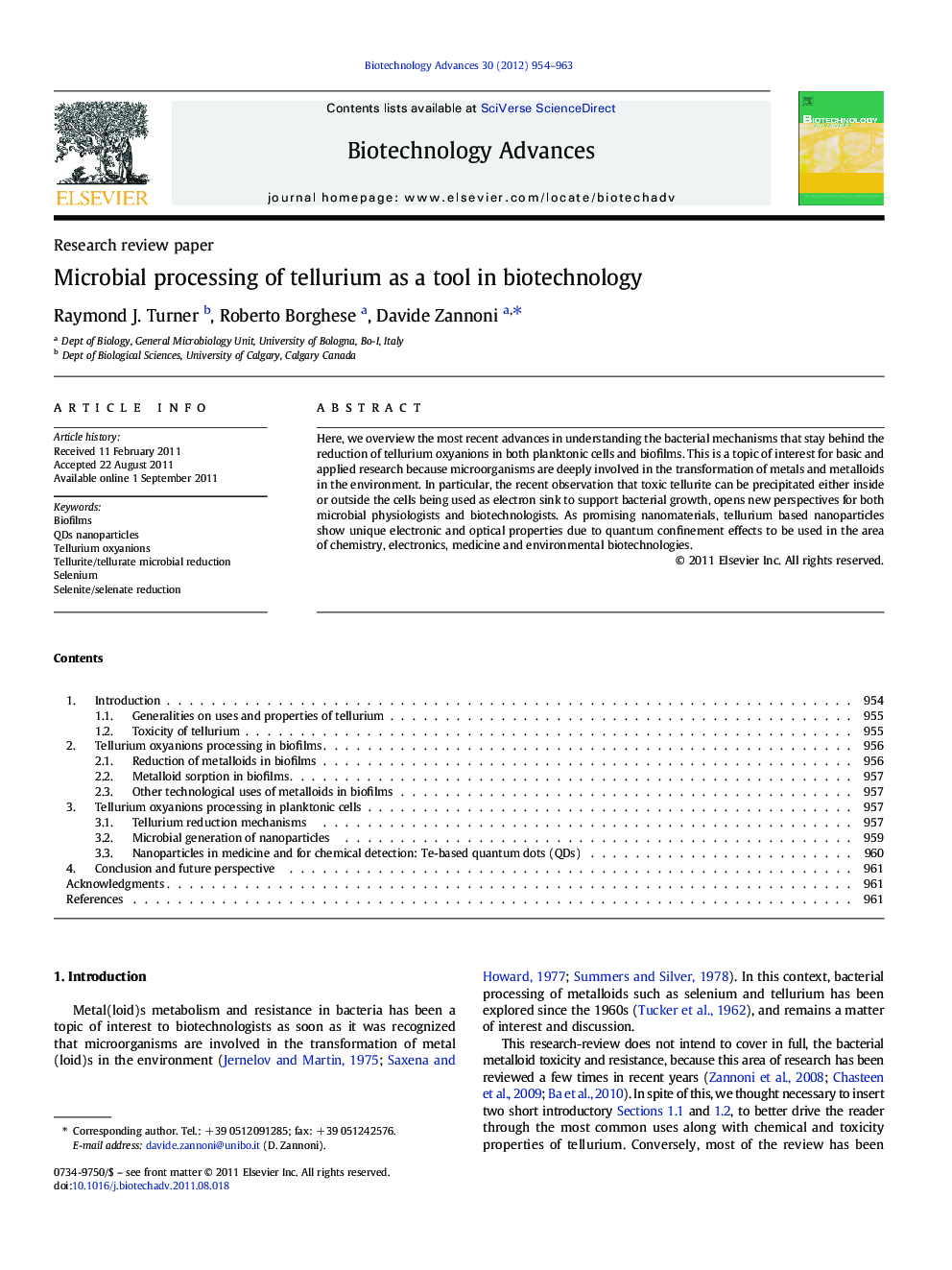| Article ID | Journal | Published Year | Pages | File Type |
|---|---|---|---|---|
| 14464 | Biotechnology Advances | 2012 | 10 Pages |
Here, we overview the most recent advances in understanding the bacterial mechanisms that stay behind the reduction of tellurium oxyanions in both planktonic cells and biofilms. This is a topic of interest for basic and applied research because microorganisms are deeply involved in the transformation of metals and metalloids in the environment. In particular, the recent observation that toxic tellurite can be precipitated either inside or outside the cells being used as electron sink to support bacterial growth, opens new perspectives for both microbial physiologists and biotechnologists. As promising nanomaterials, tellurium based nanoparticles show unique electronic and optical properties due to quantum confinement effects to be used in the area of chemistry, electronics, medicine and environmental biotechnologies.
